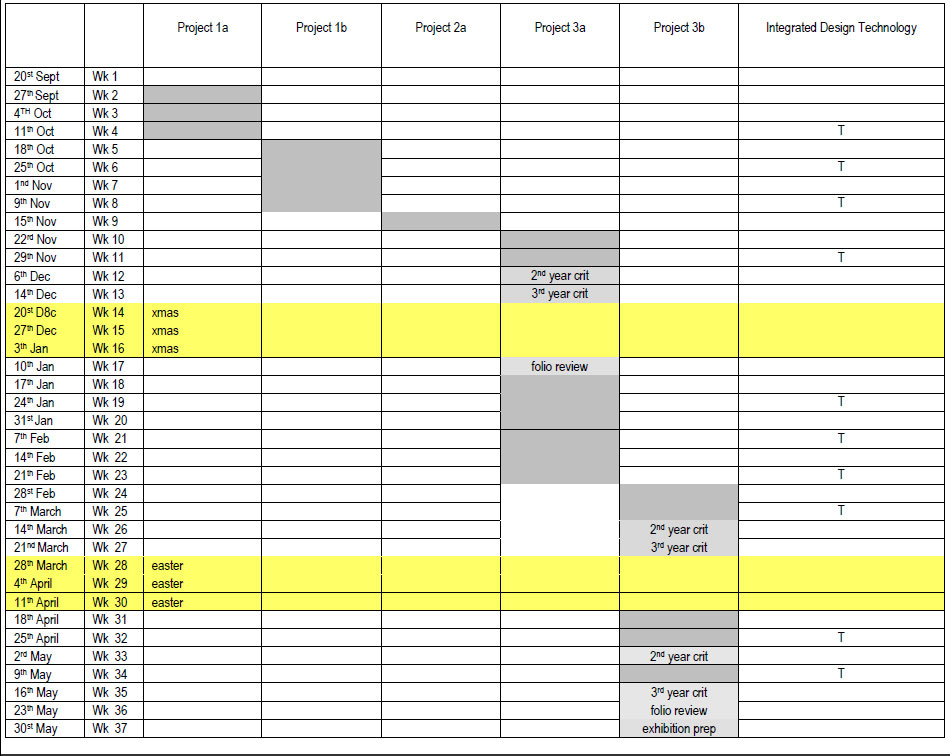Academic Year 2010 – 2011
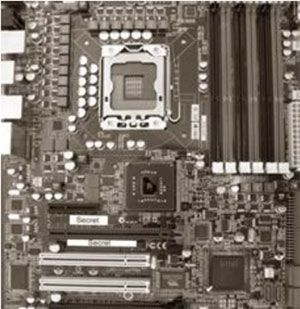
Atelier 7 will continue exploring the urban dynamics of London. This year we are reinterpreting the city’s three-dimensionality through the act of blurbing, a style of expression that is rapidly evolving to virtual networking modes (e.g. blogging and twitting). We are paying a particular attention to the area between Covent Garden and Leicester Square tube stations, where since the 19C the notion community has experimentally incorporated such social-cultural issues as ‘artistic freedom’, ‘urbane dialogue’, ‘advertisement’ and ‘entertainment’. Reconfiguring such historical layers of the site as well as its current underground-surface-overground conditions in due course, we aim to propose a web of communication as an agenda for the 21C community space.
projects:
1a. Intro mutant: prosthetic device to express yourself in response to a site context
1b. Ad mobilis: mobile studio to foster dialogue between a self and others
2a. Exit circular: morphological test of studios in their vertical circulation – workshop (Havana)
3a. Blurbing commune: structuring/spatialising the interaction between studios & site contexts
3b. Blurbing commune – flyer: refining the network in coordination with an one-day event
project 1a. Intro mutant

A blurb is a dose of highly concentrated spin intended to deflect direct perception and critical thought while presenting a desirable or attractive image to the public.
Urbandictionary.com
Who are you? Who do you become, when encountering a space and occupying it?
Stroll around the site, area between Covent Garden (WC2E 9JT) and Leicester Square (WC2H 0AP), keeping in mind that you are a person identifiable by social codes (e.g. student ID number, debit card number). Stop when an object/phenomenon attracts you. There, then, you involve a spatial rendezvous.
Employ your senses to capture a specific sensory (visual, auditory, olfactory, palate or tactile) atmosphere. Identify/draw the dual, social-natural, encounter – tactically by incorporating social information such as an exact post code and your id number into the process. The drawing is to merge the object, the space and your body, to necessarily foster the extension of your body part/organ.
Developing the identification, you design a prosthetic device to use the site context better; better in that it helps you perform more effectively to blurb about yourself.
term: 3 weeks
design: a prosthetic device to introduce yourself in relation to a site context
definition: blurb – to identify yourself
options: means of blurbing/expression – senses (visual, auditory, olfactory, palate, tactile)
tasks: see next page
refs: Celia Lury, 1998, Prosthetic culture: photography, memory and identity
Michel de Certeau, 1988, The practice of everyday life
Ted Vancleave, 2003, Totally Absurd Inventions: America’s Goofiest Patents
project 1b. Ad mobilis

My line in blurbing poetry has usually been the take it or leave it attitude – with the implication – this is F&F (fact & fiction) poetry… [yet] that is not the best advertising method
T. S. Eliot
You continue expressing, here, not in the form of monologue but incipient dialogue, that is, to bring up an intimate relationship between yourself and another person (e.g. your classmate). For the task, you transform the prosthetic mechanism (1a) into a studio which not merely accommodates you but allows you to exchange the means and contents of identification with the other. Half-enclosed, or more or less, it shall be capable of moving within the range of the site. It shall be spatially interactive, perhaps even transformable, yet in a rather two-dimensional way, as corresponding to the almost horizontal topography of the site. Operating the studio, you go deeper than perceptual interpretation. You encode and decode identities together with a particular historical layer embedded in the site to provide a preliminary infrastructure sharable for further blurbing.
term: 4 weeks
design: a mobile unit whereby you blurb about yourself in relation to another
tasks: see next page
options: intensity of use – from pastime/chatting to working and living range of movement, speed, cycle level of autonomy in relation to urban infrastructure – e.g. solar panel surfacing – electricity, water purification
tasks: see next page
refs: Georges Perec, 1998, Species of spaces and other pieces
Anthony Vidler, 1994, The Architectural Uncanny: Essays in the Modern Unhomely
Krzysztof Wodiczko, 1999, Critical Vehicles: Writings, Projects, Interviews
Aaron Betsky, 2003, Scanning: The Aberrant Architectures of Diller + Scofidio
project 2a. Exit circular
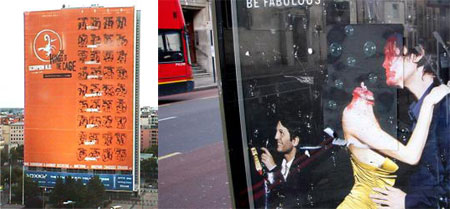
Blurbing is a game of six degrees – or fewer – separation
Betsy Lerner
Blurbing here is to further develop a threshold between individual and public territories of information. Through the activity, you at bottom leave your personal realm of expression. The threshold is the fundamental condition of an exit. To materialise this metaphoric situation, mind the following precondition.
An entrance takes shape in the pride of architectural design, while an exit does in the mere excuse of building codes or may feature the negative side of an access. An exit hardly bears anything to blurb about. But it brings up an awkward situation, when engaged in consciously. Particularly, the vertical dimension of a built environment sometimes turns the familiar scene of leaving into an escape, a much desperate form of flight.
You (four in one team) are reconfiguring this urban phenomenon by testing your studios. Position them vertically, considering the mechanism of each. Use them as the nodes of blurbing in relation to a particular site context and choreograph a meaningful and enjoyable means of way-out.
term: 1 week
venue: Architecture dept. University of Havana
sponsor: University of Havana, Cubana Air
design: four-degree game – vertical networking of exit conditions
site: TBC
options: rules and variables – vertical positions (over/under-ground)
degree of playfulness –
refs: Rem Koolhaas et al, 1995, S, M, L, XL (Exodus)
Mark Wigley, 1998, Constant’s New Babylon: The Hyper-Architecture of Desire
project 3a. Blurbing commune
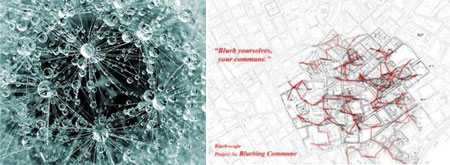
My heart even yet belongs to blurbing, and I am weary of novel-writing and of snippy correspondences with unbudging editors.
Michael Bishop
Who are you? Who do you become when blurbing about others? Where do you stand at communicating with others through blurbing? Blurbing is now a physical/corporeal act of gathering, in mental extension fostering the sense of belonging, thus softly identifying a group who share certain common interests. From this, you are to bring in a notion of commune. You weave the threedimensionality of blurbing, based on the horizontal and vertical movements of a studio (1b, 2a), in the course to infuse the initial prosthetic mechanism (1a) into a mundane communal activity. You can elaborate this process in several detail steps (e.g. sharing a stair for exit, greeting on doormats, collection of rubbish in a corridor…), all to specify the communal condition. Each step embraces a programme you can plant in accord to the site contexts, whose functional potential grows in coordination with the spatial act of blurbing. Your agenda for commune may therefore consist in the interfacing between the existing urban conditions and a new urbanity, in the soft networking of what the site has stood for and how the users can change the given information.
term: 8 weeks
design: communal spaces/programmes (varied kinds of blurbing)
options: function – to facilitate the spatial engagement or bring up a new activity
programmes inserted under-/on-/over-ground contexts of the site
tasks: see next page
refs: Mike Webb, 1962, Sin Centre
Jonathan Hill, 1998, The Illegal Architect
project 3b. Blurbing commune – flyer
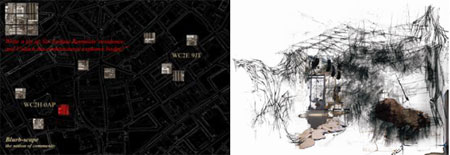
Now I’ve been on two blurbs, one of them one of W’s, & I don’t want to become a sort of fixture on the backs of his dust-covers with “‘Genius’ – George Orwell” kept permanently in type.
George Orwell
Here, blurbing takes place on a temporal dimension.
Blurbing is now an essential part of daily life, fostering communication on both individual and collective levels. Yet, is the daily life merely supposed to repeat same things perpetually?
Questioning this, you activate your ‘blurbing commune’ (3a) in the way that unlocks its static phase. For the task to give it a dynamic rhythm, to test the interactive environment, you choreograph an oneday event of blurbing. Configure its process and effects in accord to a particular weather condition (e.g. sunny/day, dark cloudy/night, rainy and snowy)
term: 4-5 weeks
design: one-day event
options: weather conditions – sunny/day, dark cloudy/night, rainy and snowy
rhythm – intensity, duration and frequency
tasks: see next page
refs: Catherine de Zegher and Mark Wigley ed., 2003, The Activist Drawing:
Retracing Situationist Architectures from Constant’s New Babylon to Beyond
Elizabeth Diller and Ricardo Scofidio, 2002, Blur: The Making of Nothing
Quentin Stevens, 2007, The Ludic City: Exploring the Potential of Public Spaces
